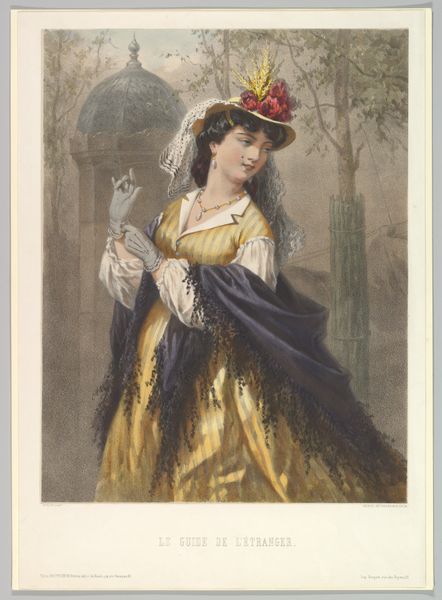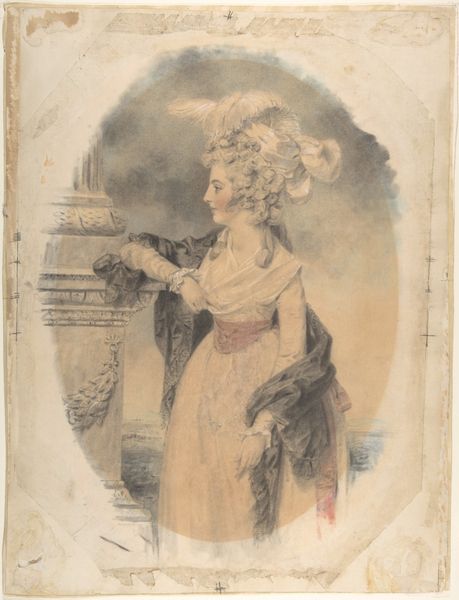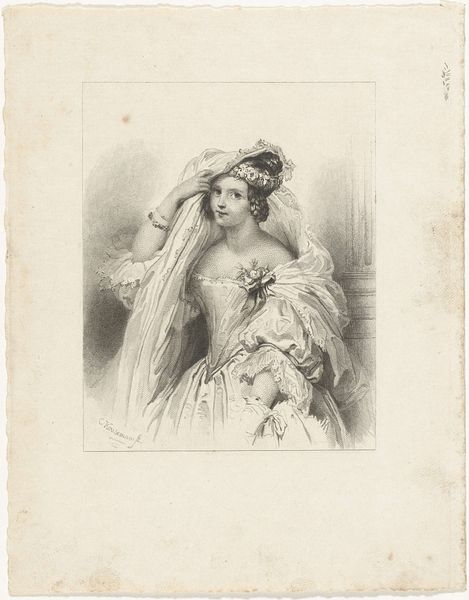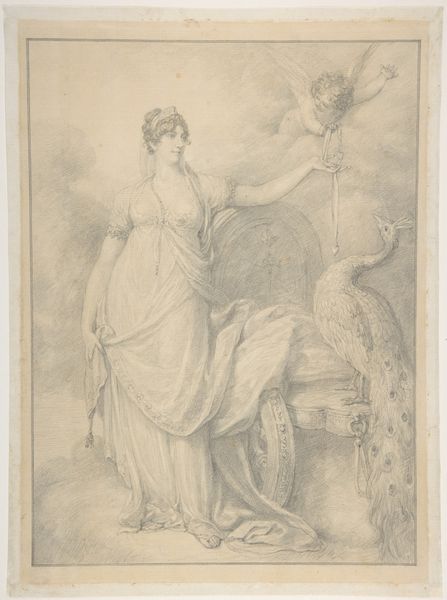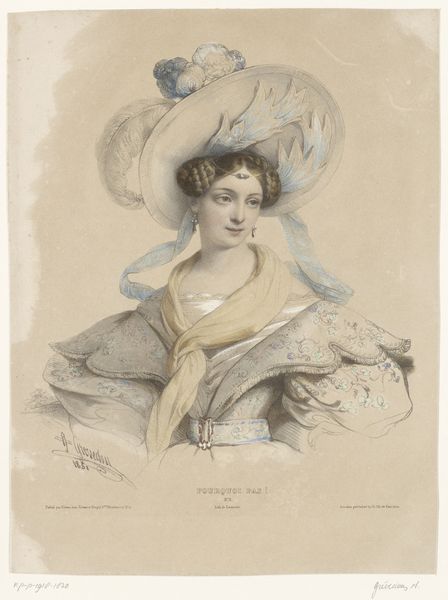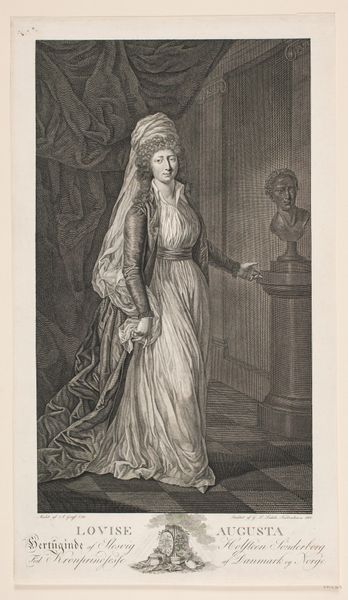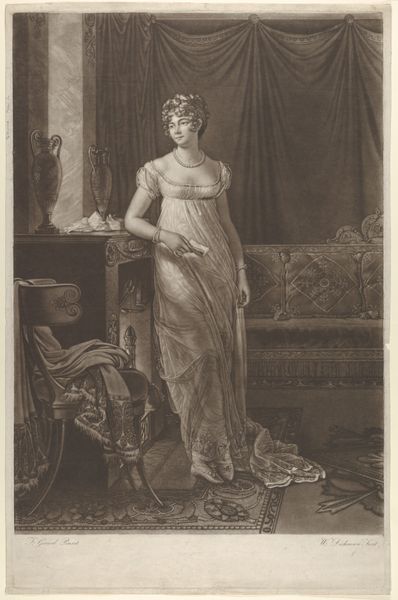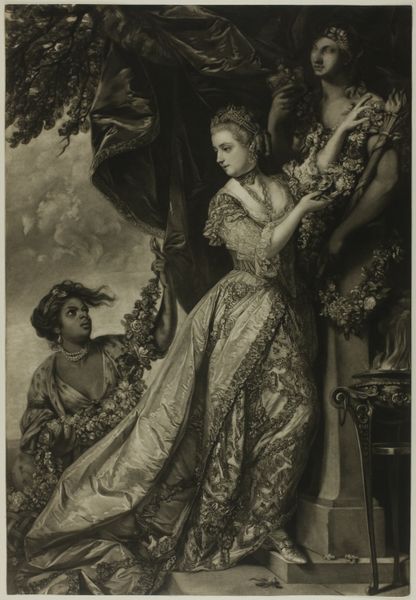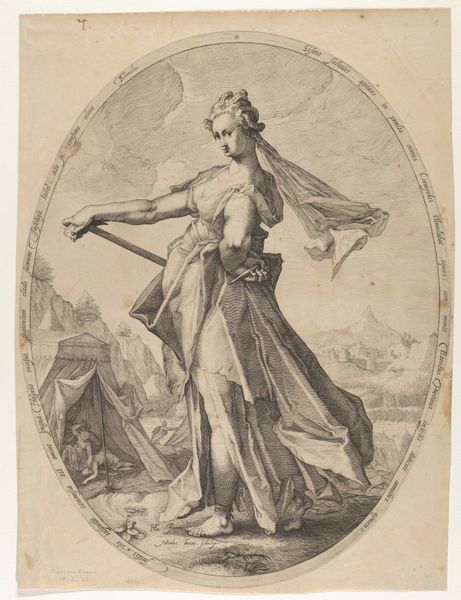
Dimensions: Image: 23.6 x 17 cm (9 5/16 x 6 11/16 in.) Mount: 31.7 x 23.8 cm (12 1/2 x 9 3/8 in.) Mat: 57.2 x 47 cm (22 1/2 x 18 1/2 in.)
Copyright: Public Domain
Editor: We're looking at "La Frayeur" by Pierre-Louis Pierson, made sometime between 1861 and 1867. It’s a watercolor painting, and I find the central figure's elaborate dress and uneasy expression captivating. What do you see in this piece beyond just the surface of a period portrait? Curator: I see a carefully constructed performance of femininity, staged against the backdrop of 19th-century Parisian society. Consider the context: Pierson was known for his collaboration with Countess Castiglione, a notorious figure who used photography to craft her public persona. Is this portrait also about crafting a persona? Who benefits from this type of image? Editor: So you're suggesting it's not just a simple portrait, but a commentary on the performance of identity? The grapes almost seem like an unnatural adornment… Curator: Exactly. The theatrical pose, the elaborate gown, even the placement of the grapes, speak to the ways women of this era navigated social expectations. We have to consider power dynamics, who gets to represent who, and for what purpose. Who controls the gaze, and whose gaze is it meant to entice? Does the figure convey confidence or discomfort? Editor: I never considered it in terms of power and performance. The title, "La Frayeur," which means fright, combined with your analysis, really reframes my interpretation. It's no longer just a pretty picture, it's a statement about societal pressures and control. Curator: Precisely. And that’s why art history isn't just about aesthetics; it’s about understanding the complex interplay of gender, class, and representation within specific historical moments. We must continue questioning whose stories are told, and how. Editor: Thanks. I learned how a portrait could reveal larger cultural meanings about society. Curator: And how examining images through the lenses of history and power challenges assumptions about identity.
Comments
No comments
Be the first to comment and join the conversation on the ultimate creative platform.

